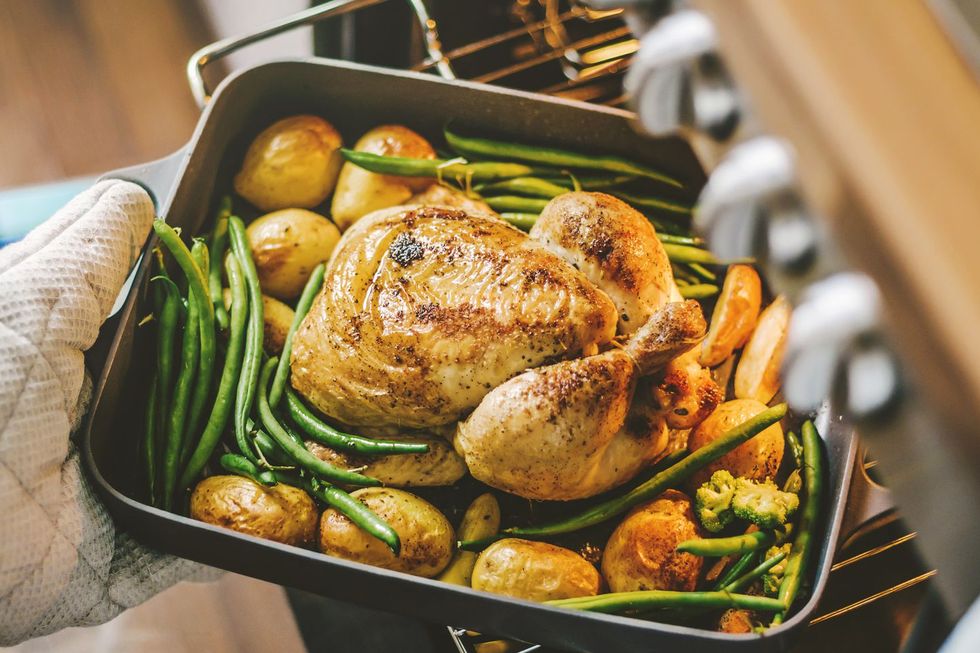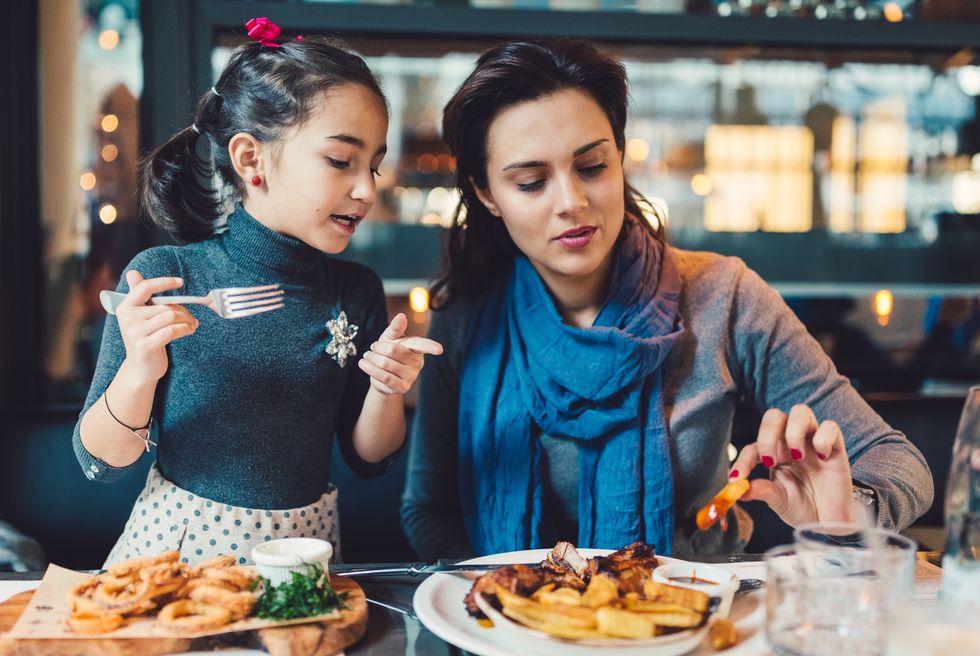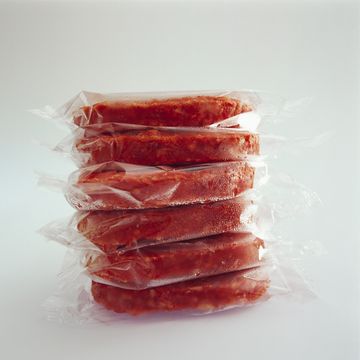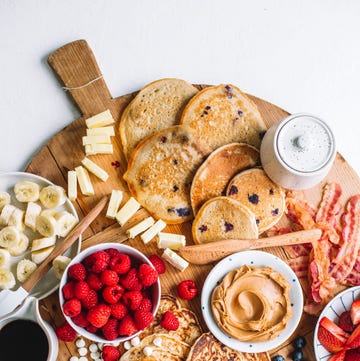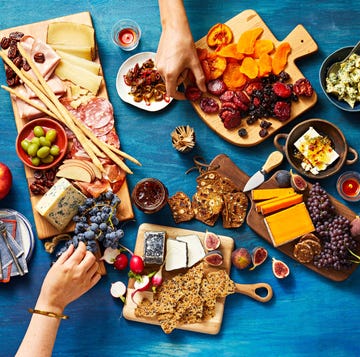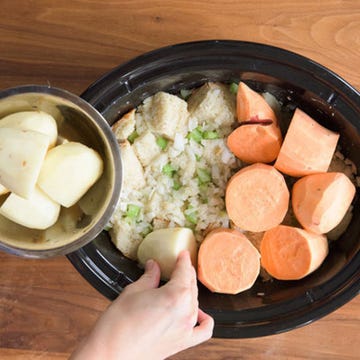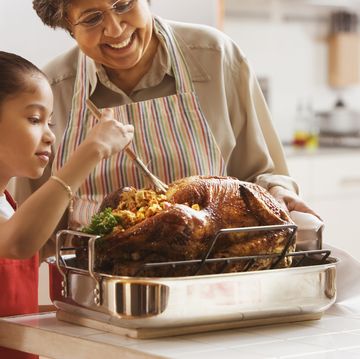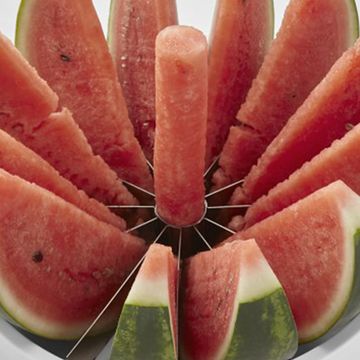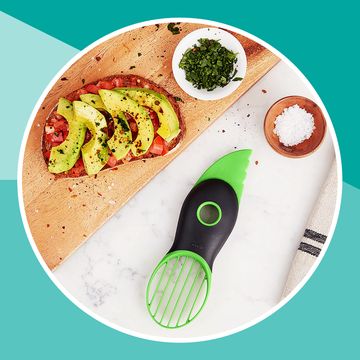Microwave ovens have changed the way we cook and eat food since they first debuted in 1970. The warming process is actually quite simple: When you press start on your appliance, microwaves begin to bounce around the chamber, infiltrating excited electromagnetic molecules into whatever food product you’re cooking to make it warm.
If you’re a regular in the kitchen — and even if you’re not — then you’ve likely heard that putting aluminum foil in the microwave causes it to heat up too quickly and catch on fire, or that microwaving plastic storage containers can melt harmful chemicals into your food. But when it comes to the food itself, what can you safely warm up in the microwave?
Around Thanksgiving this past year, photos went viral of people cooking full-sized birds in their microwaves, as well as screen shots of people tricking their mothers over text into thinking that they were going to do so. In addition to moms everywhere, health experts also expressed concern, because although you can technically cook a 12- to 14-pound turkey in the microwave, many do not always follow the protocol for cooking food safely in that way, according to Meredith Carothers, technical information specialist for the Food Safety and Inspection Service of the United States Department of Agriculture (USDA).
“In general, you can pretty much microwave any of the food groups,” Carothers says. That includes chicken, eggs, vegetables, and yes, even a whole turkey. “However, we recommend stirring or flipping the food halfway through its cook time, covering the food with a microwave-safe material, and using a food thermometer to make sure heat is distributed evenly.”
These easily overlooked tips ensure that any harmful bacteria in your meal is fully destroyed so that you’re protected from food-borne illnesses caused by harmful pathogens like salmonella. Though following these general guidelines can help you stay safe when reheating food in the microwave, different foods have varying standards for cooking safety. Here’s what you need to know about reheating some of your favorite foods.
Vegetables
Veggies are some of the best foods to cook in the microwave because they are usually tender or have a high moisture content, USDA reports. Though the research is mixed, microwaving for the most part has been found to preserve nutrients fairly well, aside from some instances when water is added. A study published in the Journal of Food Science cooked 20 different vegetables, finding that microwaving and baking preserved nutrients the best, whereas pressure cooking and boiling did not do a great job.
To cook: When cooking vegetables, the USDA recommends using glass, ceramic containers, and all plastics that are labeled for microwave-oven use. Some vegetables and fruits like grapes and raw carrots have been found to spark in the microwave, so it’s best to avoid microwaving them.
To reheat: According to the USDA, you can store leftovers in the refrigerator for three to four days or frozen for three to four months. Stir halfway through. Cover vegetables, because the moist heat will destroy bacteria. When reheating leftover vegetables, be sure they reach 165° F as measured with a food thermometer.
To thaw: If the vegetables are frozen, you’ll want to defrost them before cooking in the microwave, and after heating their temperature should read 135 °F. “If you thaw a product in the microwave, you should immediately cook it after,” Carothers says. “Microwave thawing can start to partially cook the item, and it is safest to fully cook to a safe internal temperature after thawing to avoid any harmful bacterial growth.”
Poultry
Chicken is an easy weeknight dinner that probably makes an appearance on your dinner table at least once a week. You can fully cook chicken in the microwave, though there are some things to keep in mind.
To cook: Make sure the heat is fully distributed by flipping the poultry halfway through cook time. The USDA suggests cooking all unstuffed poultry to a safe temperature of 165 °F. Additionally, it’s best practice to avoid microwaving stuffed, whole poultry, because the stuffing may not reach a high enough internal temperature to destroy bacteria.
To reheat: At home, immediately place fresh chicken in a refrigerator that maintains a temperature of 40 °F or below, the USDA suggests. Use it within one or two days, or freeze it. Already-prepared chicken should be kept cold and can be reheated for up to three to four days.
All reheated chicken should have an internal temperature of 165 °F before consumption. Be sure to check the temperature of the food in several places with a food thermometer and allow a resting time before checking the internal temperature of the food with a food thermometer.
To thaw: Boneless chicken breasts, bone-in parts, and whole chickens may take one to two days or longer to thaw in the refrigerator. It's important to cook all poultry dishes immediately after defrosting in the microwave, because the USDA says that some areas of the frozen food may begin to cook when it’s thawing. Failing to cook your poultry all the way through could put you at risk for developing a foodborne illness from salmonella enteritidis, staphylococcus aureus, campylobacter jejuni, or escherichia coli (E. coli).
Eggs
If you’re rushing out of the door but looking for a quick and easy bite to eat, try cooking up an egg in the microwave. You can scramble eggs or poach them in the microwaves in minutes.
To cook: You can actually cook eggs inside or outside of the shell, but research published in the American Journal of Ophthalmology found that eggs microwaved in their shells can explode and have even caused ocular injuries as a result. You’ll want to measure the temperature of your cooked egg with a food thermometer to make sure it reads at least 160 °F.
To reheat: All reheated leftover eggs should have an internal temperature of 165 °F before consumption.
Pork
This may not come as a surprise, but pork is the number-one most consumed type of meat in the U.S., according to the USDA. We love our bacon, sausage, and ham!
To cook: When microwaving pork, the USDA suggests cooking with medium or medium-high power. Cook ground pork patties and ground pork mixtures such as meat loaf to 160 °F, and all organ and variety meats (heart, kidney, and liver) to 160 °F. All raw pork steaks, chops, and roasts must be heated to a minimum internal temperature of 145 °F as measured with a food thermometer. If you’re working with unequal sizes of pork, you’ll want to arrange the thicker piece of meat on the out towards the outer portion of the dish and the thinner pieces on the inside for better heat distribution. Though you may be quick to take a bite, allow the meat to rest for at least three minutes before carving or consuming.
To reheat: All reheated pork should have an internal temperature of 165 °F before consumption. Eating raw pork can cause a type of food poisoning called trichinosis.
The USDA recommends eating cooked previously pork within two hours or refrigerate it at for up to three to four days.
To thaw: According to the USDA, there are three safe ways to thaw pork: in the refrigerator, in cold water (in an airtight or leak-proof bag), and in the microwave. Never thaw at room temperature on the counter or in other locations. After thawing raw pork in the refrigerator, you have up to three to five days to cook it. If you're defrosting in the microwave, it's important to cook pork immediately afterwards.
Beef
Though it may seem as crazy to you as throwing a turkey in there, you can actually cook beef roasts and steaks thoroughly in the microwave.
To cook: The USDA recommends cooking on medium or medium-high power, and you’ll want to let the meat cool for three minutes before handling. If you have a roast, place it in an oven cooking bag or covered pot before microwaving. The internal temperature reads 160 °F with a food thermometer.
To reheat: For fully-cooked beef (like Chinese food or ribs), eat within one to two hours. If you're refrigerating your take-out, cover it with a lid and eat it within three to four days, the USDA says. All reheated beef should have an internal temperature of 165 °F before consumption.
To thaw: According to the USDA, you should never defrost beef on the counter or other locations in room temperature. The three safe ways to defrost beef are in the refrigerator, in cold water, and in the microwave. Once your raw beef is thawed, the USDA says it's safe to keep in the refrigerator for three to five days before cooking. If beef is defrosted in the microwave, cook it immediately afterwards.
Beef is a perishable food that must be kept cold to prevent the growth of bacteria. Failing to cook beef all the way can lead to a number of foodborne illnesses from E. coli, salmonella, Staphylococcus aureus, and Listeria monocytogenes.

Nicol is a freelance Editorial Assistant at WomansDay.com and is a Manhattan-based journalist who specializes in health, wellness, beauty, fashion, business, and lifestyle. When Nicol isn't writing, she loves spending time with family and friends, trying new workout classes, and traveling.



